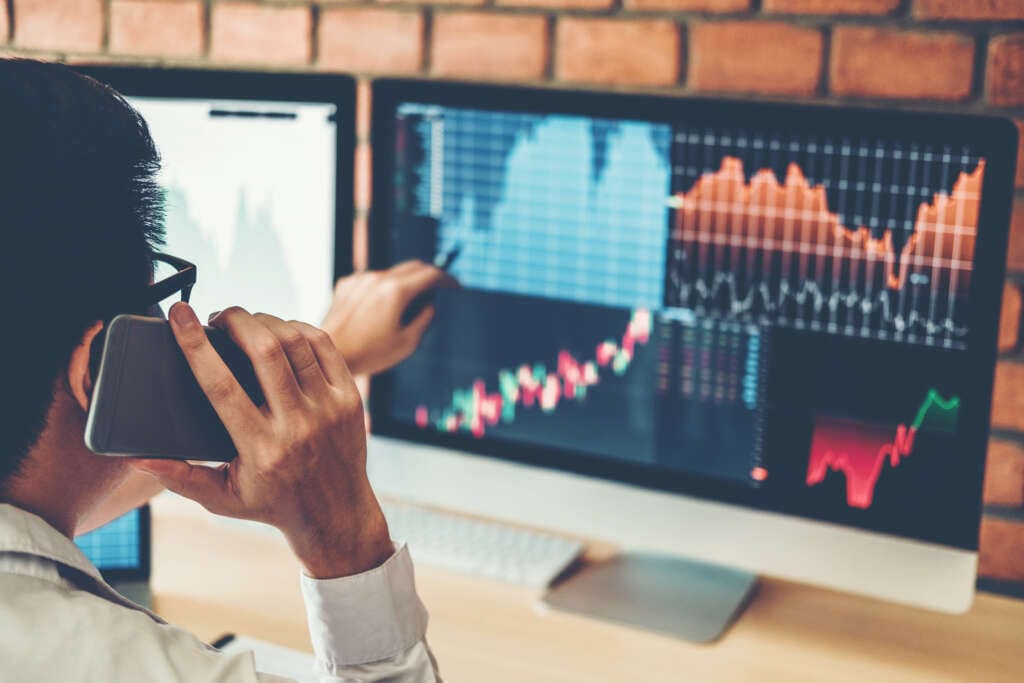
Commodities trading
Commodities trading is a dynamic and potentially lucrative venture that involves the buying and selling of raw materials, known as commodities, on various financial markets. These commodities range from tangible goods like gold, oil, and wheat to intangible products like energy contracts and futures. In this comprehensive guide, we will delve into the intricacies of commodities trading, from understanding the essence of commodities to developing effective trading strategies.
Definition of commodities
Commodities, at their core, refer to physical goods or raw materials that are fungible, meaning they are interchangeable with other goods of the same type and quality. These goods are typically standardized and traded on organized commodities exchanges. There are two primary categories of commodities: hard commodities and soft commodities.
Hard Commodities: Hard commodities encompass tangible items such as metals (gold, silver, copper), energy resources (crude oil, natural gas), minerals (iron ore, aluminum), and agricultural products (corn, soybeans).
Soft Commodities: Soft commodities include agricultural products like grains (wheat, rice), livestock (cattle, pork), and softs (coffee, cocoa, sugar).
Why trade commodities
Commodities trading offers a unique set of advantages and opportunities that attract a diverse range of traders, from institutional investors to individual speculators.
Diversification: Commodities provide diversification benefits to a portfolio. They often have low correlations with traditional asset classes like stocks and bonds, which can help reduce overall portfolio risk.
Inflation Hedge: Certain commodities, like gold and silver, have historically served as hedges against inflation. When the purchasing power of fiat currencies erodes, the value of these precious metals tends to rise.
Global Demand: Commodities are essential raw materials in the global economy. They are influenced by factors such as population growth, urbanization, and industrialization, which can create long-term demand.
Speculative Opportunities: The commodities markets offer ample opportunities for speculation and profit. Traders can benefit from both rising and falling prices by taking long (buy) or short (sell) positions.
Risk Considerations
While commodities trading presents exciting prospects, it’s vital to recognize that it carries inherent risks. Commodities markets can be volatile and subject to various external factors that can impact prices significantly. Here are some key risk considerations:
Price Volatility: Commodities prices can experience substantial fluctuations due to supply and demand imbalances, geopolitical events, weather conditions, and market sentiment.
Leverage: Many commodities trading instruments allow traders to use leverage, which can amplify both gains and losses. It’s crucial to manage leverage carefully and understand its implications.
Market Liquidity: Liquidity can vary among different commodities markets and contracts. Some markets may have lower trading volumes, leading to wider bid-ask spreads and potentially higher trading costs.
Margin Calls: Trading on margin means borrowing funds to enter larger positions. If the market moves against you, it can lead to margin calls, requiring additional capital to cover losses.
Market Hours: Commodities markets often have specific trading hours, and some commodities are traded globally around the clock. Being aware of market hours is crucial to executing timely trades.
Getting started with commodities trading
Selecting your commodities
Hard Commodities: Hard commodities, including metals, energy resources, minerals, and agricultural products, offer diverse trading opportunities.
Metals: Precious metals like gold and silver are often seen as safe havens during economic uncertainty. Base metals like copper are closely tied to industrial production.
Energy Resources: Crude oil and natural gas play pivotal roles in the global energy landscape, making them central to commodities trading.
Minerals: Minerals like iron ore and aluminum are critical for construction and manufacturing industries.
Agricultural Products: Grains (wheat, corn), softs (coffee, cocoa), and livestock (cattle, hogs) are influenced by factors like weather conditions, crop yields, and consumer demand.
Soft Commodities
Soft commodities: trading involves agricultural products that are subject to seasonal and weather-related factors. Traders often monitor crop reports and weather forecasts closely.
Choosing a Trading Platform
Selecting a reputable and reliable trading platform or brokerage is a crucial step in your commodities trading journey. Factors to consider include:
Regulation: Ensure that the platform is regulated by relevant authorities to protect your interests and funds.
Commodities Offered: Confirm that the platform provides access to the commodities you intend to trade.
Trading Tools: Look for platforms that offer comprehensive trading tools, including charting, technical analysis, and research resources.
Fees and Commissions: Understand the fee structure, including spreads, commissions, and overnight financing costs.
Customer Support: Consider the availability and quality of customer support services.
Setting up your trading account
To get started, you’ll need to open a trading account with your chosen platform. The process typically involves:
Completing an application, providing personal information, and verifying your identity.
Funding your account by depositing an initial amount of capital.
Familiarizing yourself with the trading platform’s interface and tools.
It’s essential to read and understand the terms and conditions, including margin requirements and trading policies, provided by your chosen platform.
Developing a trading plan
Setting Clear Objectives: Begin by defining your trading objectives. Are you looking for short-term profits, long-term investments, or a combination of both? Having clear goals will guide your trading decisions and strategies.
Determining Risk Tolerance: Assess your risk tolerance, which is your willingness and ability to withstand losses. Your risk tolerance should align with your financial situation and trading goals. It’s crucial to set a maximum risk per trade and adhere to it.
Establishing a Trading Strategy: Your trading strategy defines how you will approach the markets. Common strategies in commodities trading include trend following, mean reversion, and breakout trading. Choose a strategy that suits your risk tolerance and aligns with your analysis of the commodities market.
Creating Entry and Exit Rules: Develop specific entry and exit rules for your trades. These rules should be based on your chosen trading strategy and should incorporate technical and/or fundamental analysis. Having predefined rules helps remove emotions from trading decisions.
Position Sizing and Money Management: Determine how much capital you will allocate to each trade, also known as position sizing. Proper position sizing ensures that you manage risk effectively and avoid overexposure to a single trade. Additionally, consider how you will manage profits and losses within your overall portfolio.
Market analysis and research
Technical analysis
Price Charts: Price charts display historical price movements of commodities. Traders use various chart types, such as candlestick and bar charts, to identify patterns, trends, and potential support and resistance levels.
Technical Indicators: Technical indicators, such as moving averages, relative strength index (RSI), and MACD, provide quantitative insights into price momentum and potential trend reversals.
Chart Patterns: Chart patterns like head and shoulders, double tops, and flags can signal potential trend changes and offer entry and exit points.
Fundamental analysis
Supply and Demand Factors: Fundamental analysis involves assessing supply and demand dynamics for a particular commodity. Factors like production levels, consumption trends, and geopolitical events can impact supply and demand.
Economic Indicators: Economic indicators, such as GDP growth, employment data, and consumer sentiment, can influence commodity prices by indicating overall economic health.
News and Events: Stay informed about news and events that can affect commodity markets, including weather reports, government policies, and global economic developments.
Placing and managing trades
Types of orders
Market Orders: Market orders execute at the current market price. They are typically used when you want to enter or exit a position quickly.
Limit Orders: Limit orders specify a price at which you want to buy or sell a commodity. They are useful for entering trades at specific price levels.
Stop Orders: Stop orders become market orders once a predetermined price level is reached. They are commonly used for setting stop-loss and take-profit levels.
Risk Management
Setting Stop-Loss Orders: A stop-loss order is an essential risk management tool that limits potential losses by automatically selling a position when the price reaches a specified level.
Using Take-Profit Orders: Take-profit orders lock in profits by automatically selling a position when it reaches a predetermined profit level.
Diversification: Diversify your commodities portfolio to spread risk. Avoid concentrating too much capital in a single commodity or trade.
Monitoring your trades
Real-Time Tracking: Keep a close eye on your open positions and monitor real-time price movements using your trading platform’s tools and charts.
Adjusting Stop-Loss and Take-Profit Levels: As market conditions change, consider adjusting your stop-loss and take-profit levels to lock in profits or limit potential losses.
Trading Strategies and Techniques
Day Trading: Day traders buy and sell commodities within the same trading day, aiming to profit from short-term price fluctuations.
Swing Trading: Swing traders seek to capture intermediate-term price movements by holding positions for several days or weeks.
Trend Following: Trend-following strategies involve identifying and trading in the direction of established market trends.
Scalping: Scalpers aim to make quick, small profits by executing numerous trades within short timeframes.
Seasonal Trading: Seasonal traders capitalize on recurring patterns and seasonal factors that influence certain commodities.
Options and Derivatives Trading: Options and derivatives provide alternative ways to trade commodities, offering leverage and risk management tools.
Staying informed and updated
Market News and Analysis: Stay informed about the latest developments in commodities markets by regularly reading market news and analysis reports from reputable sources.
Economic Calendar: Keep track of economic events and data releases that can impact commodities prices, such as crop reports, inventory levels, and economic indicators.
Global Events and Their Impact: Be aware of global events, including geopolitical tensions, weather events, and policy changes, that can affect commodities markets.
Reviewing and adjusting your trading approach
Periodic Assessment of Trading Performance: Regularly review your trading performance and assess the effectiveness of your strategies. Identify strengths and weaknesses to make informed adjustments.
Adapting to Changing Market Conditions: Be flexible in adapting your trading approach to changing market conditions. What works in one market environment may not be effective in another.
In conclusion, commodities trading is a dynamic and potentially rewarding endeavor that offers diverse opportunities for traders. To succeed in commodities trading, it’s crucial to develop a clear trading plan, manage risks effectively, stay informed about market developments, and continuously adapt your strategies. Remember that commodities trading carries risks, and it’s essential to trade responsibly, keeping your financial goals and risk tolerance in mind. With dedication, education, and prudent risk management, you can navigate the commodities markets and work towards your trading objectives. The journey of mastering commodities trading is a continuous learning process that can lead to both financial growth and personal fulfillment in the exciting world of commodities.


